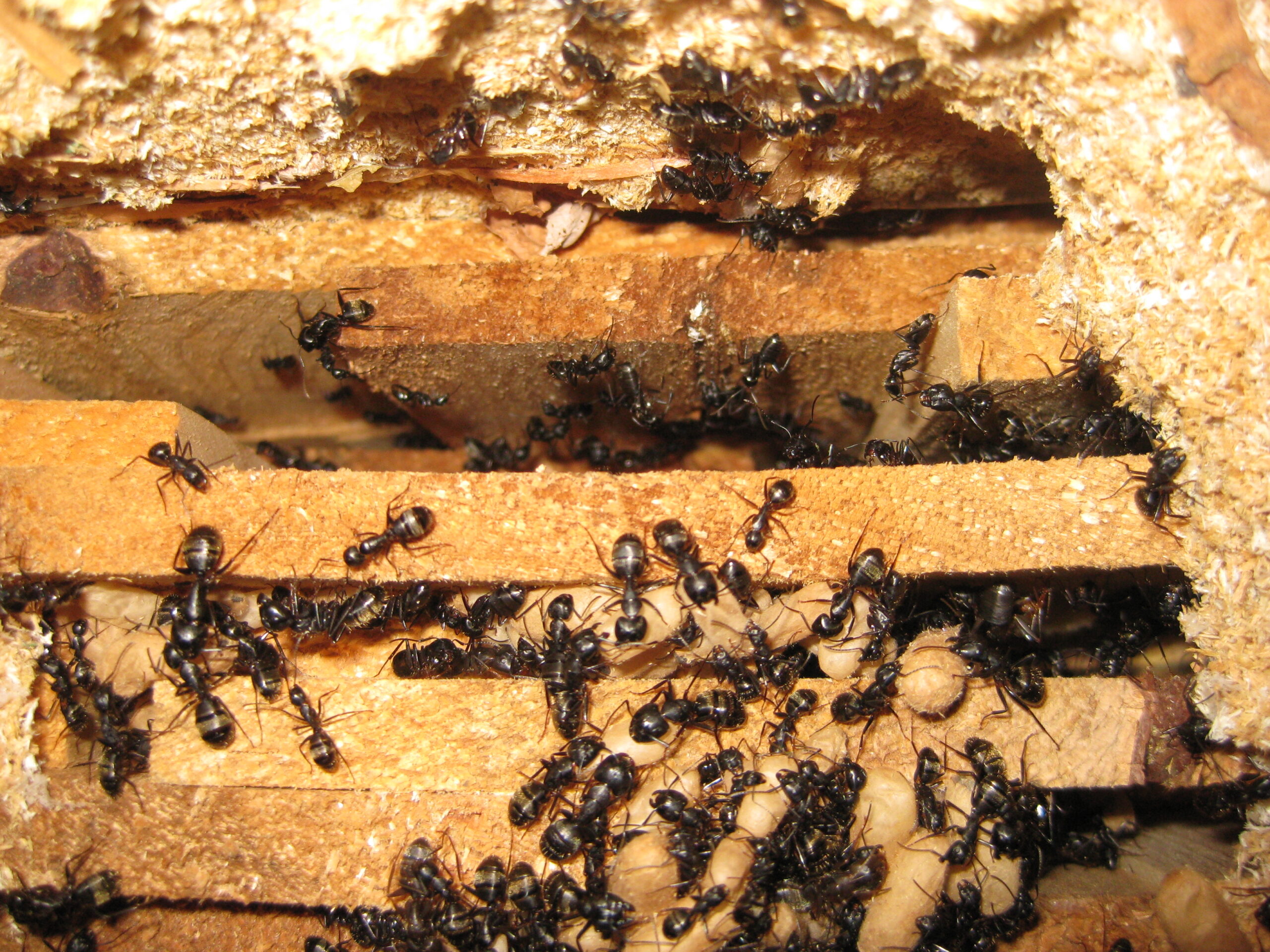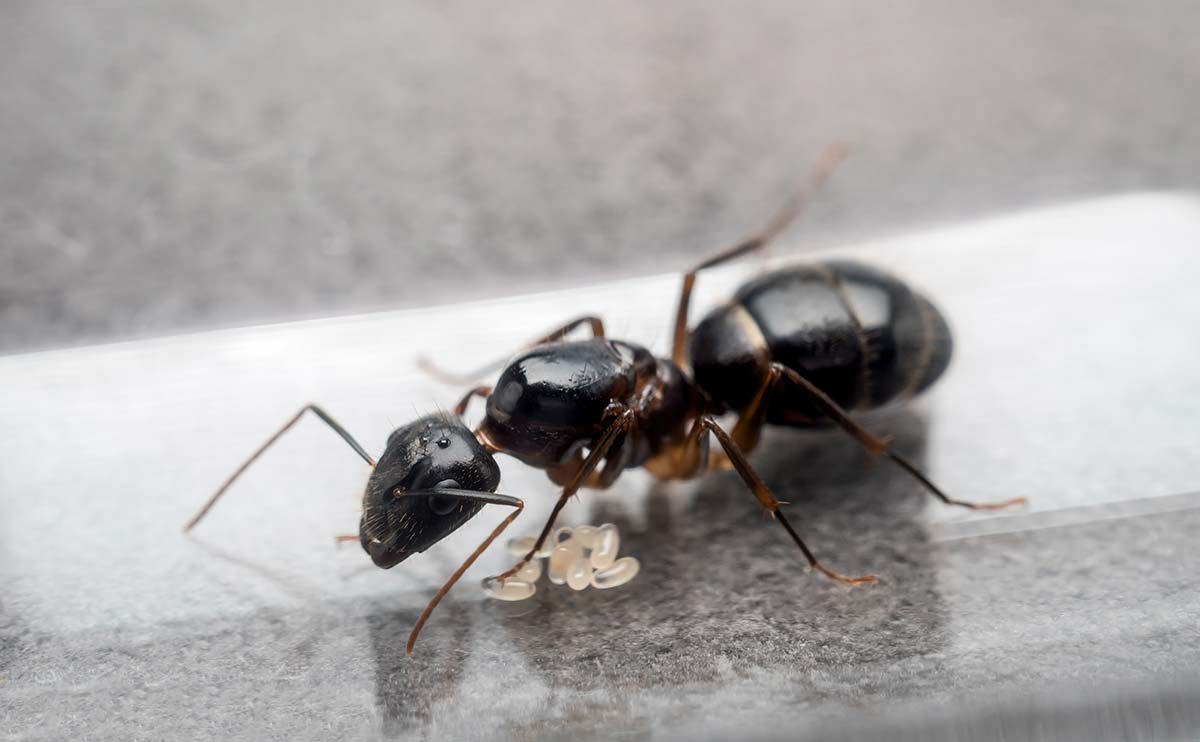Florida’s subtropical climate is a magnet for countless insect species, and ants rank high on the list of persistent pests. Residents of Sanford and Lake Mary often experience ant intrusions that can progress from a few stray ants to a full-blown infestation within a surprisingly short time. This region’s year-round warmth, combined with humidity and periodic rain, provides ants the perfect conditions to forage, reproduce, and establish colonies. The following guide explores why ants are so common in this part of Florida, highlights the species frequently found in homes and businesses, and outlines a thorough approach to extermination that addresses ant problems at their source.
Introduction
Ants are more than just a minor annoyance when they appear in kitchens, bathrooms, or around pet food bowls. These social insects often create complex colonies, complete with multiple castes—worker ants, soldiers, drones, and queens. They use pheromone trails to communicate, enabling them to locate and exploit food sources in a remarkably efficient manner.
Once a scout ant identifies an easy meal, it marks the path for others to follow. What starts as a single line of ants along the edge of a countertop can grow into a stream of hundreds before long. In many parts of Florida, including the area around Sanford and Lake Mary, ants thrive thanks to the temperate climate and abundant moisture. While quick fixes like store-bought sprays might kill the ants in plain sight, they seldom address the deeper issue of an established colony that may be hidden behind walls, beneath floors, or outdoors near the foundation.

Why Florida’s Climate Attracts Ants
Several key factors in Central Florida’s environment make ant control a constant concern:
- Warm Temperatures Year-Round
Unlike regions with cold winters that slow or halt ant activity, Florida provides consistent warmth. Ants can gather food and reproduce in every season, allowing colonies to grow continuously. - High Humidity and Rainfall
Rain can drive ants from flooded ground nests into homes and other structures. Conversely, during drier periods, ants seek indoor water sources, such as leaky pipes or condensation around appliances. Either way, local weather patterns encourage ants to explore indoor spaces at various times of the year. - Vegetation and Landscaping
Lush gardens, lawns, and ornamental plants create havens for insects. Some ant species build mounds or nest under rocks, logs, or mulch. When these nests are close to the perimeter of a building, the ants can venture indoors to forage for food. - Urban and Residential Development
Growth in places like Sanford and Lake Mary has led to more structures built in areas once dominated by native vegetation. As natural habitats shrink, ants adapt by finding resources in and around buildings. - Minimal Seasonal Dormancy
In colder regions, ants often go dormant or reduce activity during winter. In Florida, temperature drops are typically mild, meaning ants rarely need to rest or suspend their efforts.
Given these conditions, it is easy to see why ants flourish. While they are an essential part of outdoor ecosystems—decomposing organic matter, aerating soil, and feeding on other insects—ants become problematic once they start to invade living and working areas in large numbers.

Common Ant Species in Florida
Though dozens of ant species inhabit Florida, certain ones regularly turn up in homes, offices, and other buildings:
- Carpenter Ants
One of the largest ant species people encounter indoors, carpenter ants often have a mix of black and red coloring. They excavate wood not to consume it, but to create galleries for nesting, particularly in damp or decaying timber. Over time, their tunneling can weaken structures. Spotting a single carpenter ant can indicate a nearby colony, potentially concealed in walls, attics, or wooden support beams. - Fire Ants
Recognized for their reddish-brown color and painful stings, fire ants construct mounds in lawns, parks, or fields. Disturbing one of these mounds can result in numerous stings, which form itchy pustules and can pose health concerns for people and pets. Fire ants also infest indoor spaces when seeking shelter from extreme rainfall or drought, causing additional aggravation for property owners. - Ghost Ants
These tiny ants have a translucent abdomen, making them appear partially see-through. They prefer sweet or greasy foods and often wander into kitchens and pantries. Ghost ants can set up multiple satellite colonies in wall voids, houseplants, or beneath appliances, complicating extermination efforts if every nesting site is not identified. - Argentine Ants
Argentine ants are small, uniformly brownish ants known for forming large colonies with multiple queens. Their worker ants travel in thick, noticeable trails, which may lead to food sources inside a building. Because they can spread quickly, even a minor Argentine ant presence can balloon into a large-scale infestation if not handled promptly. - White-Footed Ants
Sporting dark bodies and lighter-colored feet, white-footed ants typically nest in shrubs, trees, or mulch piles. They come inside if they discover accessible water and food. These ants maintain large, persistent colonies, and repeated sightings may indicate that they are nesting both outdoors and indoors. - Pharaoh Ants
Pharaoh ants are extremely small and often yellowish. They favor warm, humid environments and hide their colonies in narrow crevices, wall voids, or behind baseboards. When treated improperly, these ants can split their colony—a behavior called “budding”—resulting in multiple new nests. Their ability to fragment makes them particularly troublesome to eliminate without a carefully managed plan.
Identification of the specific ant species in your home or business is essential to effective extermination. Each variety exhibits different feeding preferences, nesting habits, and vulnerabilities, meaning a one-size-fits-all solution rarely works.
The Importance of Professional Extermination
Many property owners try do-it-yourself solutions first, purchasing over-the-counter sprays or using homemade baits. While these may kill some foraging ants, they typically leave the queen—and thus the rest of the colony—untouched. Additional challenges often arise:
- Colonies Rebounding: If a queen remains active, she will continue to lay eggs, replacing any lost worker ants rapidly.
- Splitting Colonies: Species like Pharaoh ants or ghost ants may scatter into smaller sub-colonies when partially eradicated, making the infestation more widespread.
- Misidentification: Each ant species requires specific approaches, so applying the wrong technique can waste time and money and may even worsen the infestation.
- Unseen Nesting Sites: Ants frequently nest behind walls, under flooring, or in attics. Reaching these sites usually demands specialized knowledge and tools that most DIY methods lack.
Professional extermination goes beyond short-term fixes. An effective program involves thorough inspections, proper identification of the ant species, and strategic treatment of colonies at their core. This can save considerable frustration in the long run, preventing repeated cycles of infestation that often occur when ants are only partially addressed.

Our Approach to Ant Control
- Inspection and Identification
A successful treatment starts with locating ant trails and pinpointing nest locations. Exterminators look for high-moisture zones, entry points around doors or windows, and areas where ants gather food or water. Figuring out which ant species is present allows for a customized plan based on that species’ behaviors and weaknesses. - Targeted Treatments
Different ants respond differently to various control methods. Ghost ants and Pharaoh ants, for example, may require bait stations placed strategically along trails so that worker ants inadvertently transport toxic substances back to the colony. Carpenter ants might need direct treatment in damp wood where they nest. Precise applications target the core of the colony while minimizing unnecessary exposure in other parts of the home or environment. - Colony Elimination
For many ant infestations, the ultimate goal is to disrupt or eliminate the queen’s ability to reproduce. By focusing on treatments that worker ants bring back to the nest, it becomes possible to impact the colony at its source. Surface spraying alone rarely achieves this outcome, which is why professional strategies often have a better success rate. - Prevention and Maintenance
Even after an infestation is reduced, ants can return if the property remains attractive to them. Closing gaps, fixing plumbing leaks, storing food in sealed containers, and trimming branches away from exterior walls all contribute to a less hospitable environment. Routine inspections or follow-up services can detect early signs of new invasions before they spiral into major problems again. - Ecologically Responsible Methods
Many residents of Sanford and Lake Mary prefer an approach that respects the broader environment. Targeted treatments reduce the risk of affecting non-target insects, wildlife, or beneficial organisms. Professionals who use such techniques focus on placing baits or barrier treatments in specific zones where ants are most active, maximizing efficiency while minimizing collateral effects. - Education and Collaboration
Effective ant control is a partnership. Property owners benefit from understanding how ants operate—especially how small details like unsealed sugar containers or tiny gaps under doors can invite these pests inside. By implementing recommended preventive measures, homeowners and businesses can help ensure that extermination efforts have long-lasting results.
Service Areas
This comprehensive ant control approach is available in Sanford and Lake Mary, communities known for scenic natural areas, thriving neighborhoods, and a climate that fosters near-constant insect activity. The blend of suburban growth, established residential zones, and open green spaces can make ants a frequent concern, as they readily travel from lawns or landscaping into buildings.
Residents in these areas are often drawn to the lush surroundings and mild seasons, but these same factors support a broad range of pest species. Ongoing, proactive pest management can help preserve the comfort and safety of any property—whether it is a single-family home, a business location, or a multi-unit complex.
Why Choose Us
- Local Understanding
Knowledge of Central Florida’s climate, seasonal weather patterns, and common local ant species can make a significant difference in how quickly and thoroughly an infestation is resolved. Recognizing the specific conditions around Sanford and Lake Mary informs every step of the extermination process. - Attention to Detail
Ants can slip through the smallest openings, and thorough inspections are essential to prevent them from finding yet another access point. This goes beyond spraying and hoping for the best—each property is examined for potential vulnerabilities and hidden colonies. - Strategies Tailored to Each Species
With multiple ant types populating the region, a one-size-fits-all approach seldom delivers effective results. By customizing treatment based on species identification, the likelihood of completely eliminating the colony greatly increases. - Focus on Long-Term Relief
Addressing the surface problem—worker ants foraging in the kitchen or bathroom—is just one aspect of a successful plan. The real objective is to stop the colony at its source, undermining its ability to replenish workers. - Informative and Collaborative
The best results happen when property owners understand how to make their environment less inviting to ants. Sharing tips about food storage, moisture control, and basic home repairs can extend the benefits of professional extermination and reduce the odds of repeat infestations.
Ants are opportunistic by nature, and Florida’s environment gives them plenty of chances to flourish. By acting quickly at the first sign of an infestation—whether that is a trail of ghost ants along the counter or a mound of fire ants in the yard—you can save time and frustration. A thorough program that identifies the species, locates the colony, and removes conditions that encourage ants to return provides a stronger defense for your home or business.
Contact us to learn more or schedule your service. A carefully tailored plan can address existing colonies and ensure that the environment is less attractive for future ones. From carpenter ants that threaten wooden structures to tiny Pharaoh ants hiding in wall voids, each challenge calls for knowledge, persistence, and a willingness to track ants to their hidden nests.
Maintaining a more comfortable, pest-free environment in Sanford or Lake Mary is certainly achievable. With consistent monitoring, proper sanitation, and targeted extermination methods, homeowners and businesses alike can focus on the many advantages of living in Central Florida without the nuisance of constant ant invasions. By investing in informed strategies, it is possible to keep these determined insects at bay and enjoy the best that the region has to offer.
